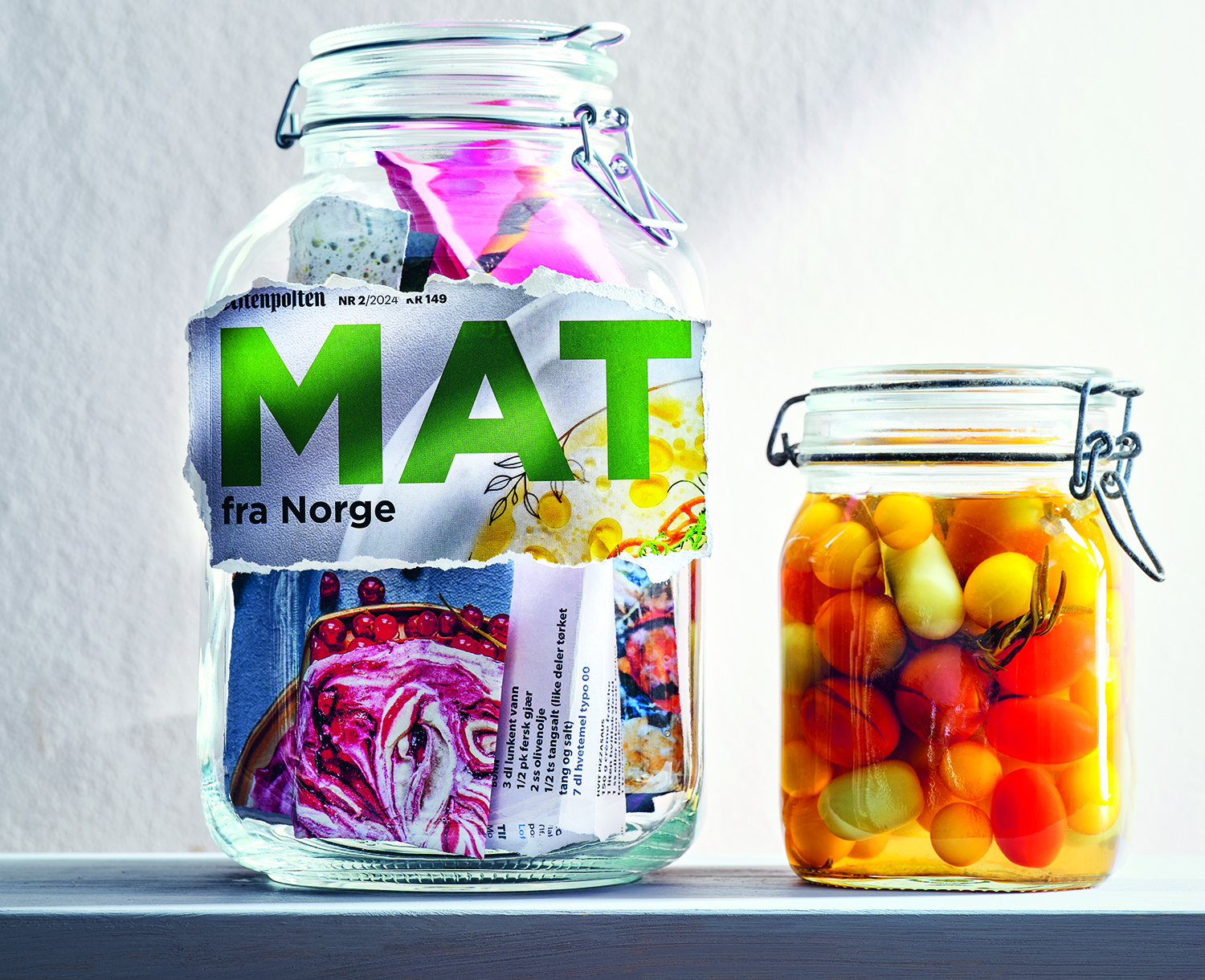"The photos mean everything to our magazine. We want to whet our readers’ appetites to taste and cook our food."
As editor-in-chief of Norway’s most-read food magazine, Kari Einertsen ensures that 124 freshly printed pages of pure food inspiration leave the Ålgård Offset printing press every month. “But it was Per Borglund who founded the magazine 13 years ago, when the food hype hit Scandinavia, so it’s really his baby” Einertsen says, smiling.
Uncoated paper – no 'food porn' feeling
For a first-class food magazine, printed picture quality is crucial. Einertsen wants the readers to “smell” Norwegian specialties like roast reindeer, dried fish, and gooseberries, on the pages.
“The photos mean everything to our magazine. We want to whet our readers’ appetites to taste and cook our food. That’s why the magazine founder Per Borglund spent plenty of time choosing the perfect kind of paper. In London, he found Jamie Oliver’s magazine Jamie printed on uncoated paper, and Borglund liked that it didn’t have a ‘food porn’ feeling about it with glossy pages. It signalled instead down-to-earth, environmentally friendly, thoroughness. We have printed on the same paper since the start, it simply feels like quality paper,” Einertsen says, adding that Holmen was the only paper producer that could deliver the high-quality uncoated product they needed, making it a simple choice.
Locally produced organic food
The core of the magazine is the editorial storytelling, and the readers – mainly 40-70-year-old foodies – love Norwegian traditions, locally produced organic food and local dishes and culinary methods. “We tell stories about the farmer in the field, the chef in the restaurant, the local fisherman. Organic, environmentally friendly stories – and this paper has that kind of a feel. It feels a bit rough, natural and organic in the structure when you hold it in your hands. And that’s just as important as what meets the eye,” Einertsen says.
Close to 100,000 readers
Even though the print market in general has lost market share, Mat fra Norge’s close to 100,000 readers remain devoted. Subscribers also get access to a digital version of the magazine, though Einertsen herself admits to being a true print fan: “I think the printed magazine is used differently. You can sit with your magazine on the sofa, or out on the veranda, or read it on the train – and it’s something completely different to reading on a screen.”
“You can feel the structure of the paper and regardless of the light in the room, it’s readable from all angles."
At Ålgård Offset, where the magazine is printed, administrative director Gaute Jakobsen shares Einertsen’s enthusiasm and belief that the choice of paper is crucial. His confidence in strong future growth in the sector is justified – Ålgård Offset prints over 500 million examples of printed matter every year and has the country’s most flexible finishing department – the latest investment being a high-capacity Kolbus perfect binder.
“To have realistic and attractive images is key for a food magazine, so the photos are very important. Having professional photographers makes a big quality difference in contrast and colour reproduction, and makes it easier for us to print really well,” he says.
More readable than glossy pages
Mat fra Norge is printed on Holmen TRND 2.0. A big advantage of uncoated paper is that it is more readable than glossy pages. “You can feel the structure of the paper and regardless of the light in the room, it’s readable from all angles,” Jakobsen explains. “Holmen TRND 2.0 is a high bulk paper that gives a feeling of quality. The paper seems thicker than it is, so you get a lot per kilo. It is also stable and easy to work with in all processes, and easy to fold and glue.”
Uncoated paper is becoming increasingly popular, according to Jakobsen. Today, 50% of the paper used at Ålgård Offset is uncoated.
Holmen has the lowest CO2 emissions
“The trend has increased significantly, and I think that’s because compared to a glossy paper, it appears more environmentally friendly. Also, Holmen’s papers have the lowest CO² emissions in Europe, that also makes them attractive,” Jakobsen adds.

It's a keeper – the food magazine Mat fra Norge is valued for its contents honouring Norwegian food traditions.

